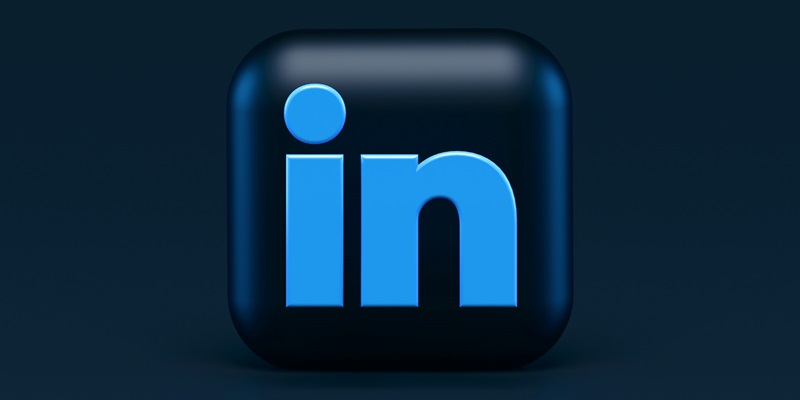In the realm of B2B marketing, engaging with your audience is paramount, and newsletters—whether through LinkedIn or email—form a crucial part of communication strategies. However, marketers often grapple with the decision of whether to invest more heavily in LinkedIn newsletters given their rising popularity or to stick with the tried-and-tested email newsletter format. This article will dissect the roles of LinkedIn and email newsletters in B2B marketing and shed light on a strategic approach to utilize both platforms effectively. While it might seem tempting to shift entirely to LinkedIn because of its professional context and networking prowess, the unique strengths of email newsletters can’t be ignored. Let’s delve into the dynamics and strategy for balancing these two powerful tools in your marketing arsenal.
Understanding LinkedIn Newsletters in B2B Marketing
The upsurge in LinkedIn newsletters in 2024 has captured the attention of B2B marketers looking for innovative ways to enhance their content marketing initiatives. These platform-bound newsletters allow creators to deep-dive into industry-specific topics and directly engage with an audience already primed for professional content. The allure of LinkedIn newsletters lies in their ability to boost a brand’s presence and interactiveness on the platform, leading to an increase in both followers and engagement metrics, an aspect that’s becoming increasingly important in today’s content-saturated digital environment.
Yet, it’s essential to understand the limitations imposed on LinkedIn newsletters by virtue of them being classified as Shared media. The platform dictates the reach of content through its algorithms, making your visibility susceptible to LinkedIn’s prioritization of keeping users on-site. While they represent a promising avenue to bolster visibility on LinkedIn, it’s crucial for marketers to recognize that Shared media does not afford the same level of control and ownership over content and audience as other types of media.
The Enduring Value of Email Newsletters
Despite challenges posed by cluttered inboxes and the rise of social media platforms, email newsletters have stood the test of time in terms of audience engagement and preference. They remain popular due to the direct, personalized line of communication they establish with subscribers. In fact, the vast majority of customers express a preference for email when it comes to receiving transactional and promotional content from businesses—a testament to the enduring value of email newsletters within the B2B sphere.
Email marketing occupies a unique niche as “Granted” or “Permission” media, according to authorities like Chad S. White. This classification amplifies the marketer’s power over both content and audience, a significant edge over platforms like LinkedIn where changes in policy or algorithm can disrupt reach and engagement. However, the visibility and engagement challenges of email cannot be discounted. They require marketers to deploy robust strategies to stand out among the plethora of emails vying for their target audience’s attention, a situation starkly different from the algorithm-driven challenges of LinkedIn.
Strategic Integration of LinkedIn and Email Newsletters
A synergetic approach, leveraging the strengths of LinkedIn in conjunction with email, presents an immense opportunity for B2B marketers to enhance their marketing effectiveness. Content syndication stands as a strategic pillar in this vision, where LinkedIn newsletters serve not as standalone content repositories but as a gateway directing readers towards in-depth articles housed on the company’s primary website. This method not only boosts website traffic but also enriches the user’s journey with a variety of touchpoints.
Avoiding content redundancy between your email and LinkedIn newsletters is another strategic recommendation. By crafting distinct content tailored for each medium, marketers can sustain interest across these channels. This can involve reserving certain content solely for email subscribers, while using LinkedIn to publish thought leadership pieces that position the brand as an authoritative voice in their field. The result is a rich tapestry of content that engages audiences in unique ways across different platforms.
Exclusive Content and Audience Control
The creation of exclusive content for LinkedIn leverages the platform’s robust user base and professional context. Offering content that is tailor-made for LinkedIn not only caters to the interests of its users but also enhances a brand’s standing as a thought leader within its industry. This exclusive content can become a significant draw for the platform’s audience, fostering heightened engagement on LinkedIn.
In stark contrast, email newsletters offer unparalleled audience control. Unlike LinkedIn, where users are subjected to algorithmic changes that can abruptly affect content reach, email marketers possess direct access to their subscribers’ inboxes. This empowers marketers with a dependable means of communication, immune to the whims of a platform’s evolution. However, it’s imperative to recognize the volatility in exclusively relying on a single platform, which can shift the dynamics of engagement overnight.
Diversifying Platforms to Mitigate Risks
The landscape of digital marketing is unpredictable, with algorithm changes and policy updates being routine. Diversification of communication channels is, therefore, a crucial risk mitigation strategy. It ensures that your marketing efforts are not tied down to the fate of a single platform, which may introduce changes that are detrimental to your content’s performance. Embracing a diversified approach, where LinkedIn and email newsletters are both integrated parts of a cohesive omnichannel marketing strategy, allows for greater adaptability and control.
Incorporating both LinkedIn and email newsletters into your marketing mix underscores the necessity to diversify, while emphasizing the strengths of each medium. Combining the direct and personal touch of email with the professional and network-geared focus of LinkedIn can lead to a powerful symbiosis. Marketers should strive to create a resilient ecosystem where the distinct power of each tool contributes to a comprehensive, dynamic, and engaging B2B marketing strategy.

